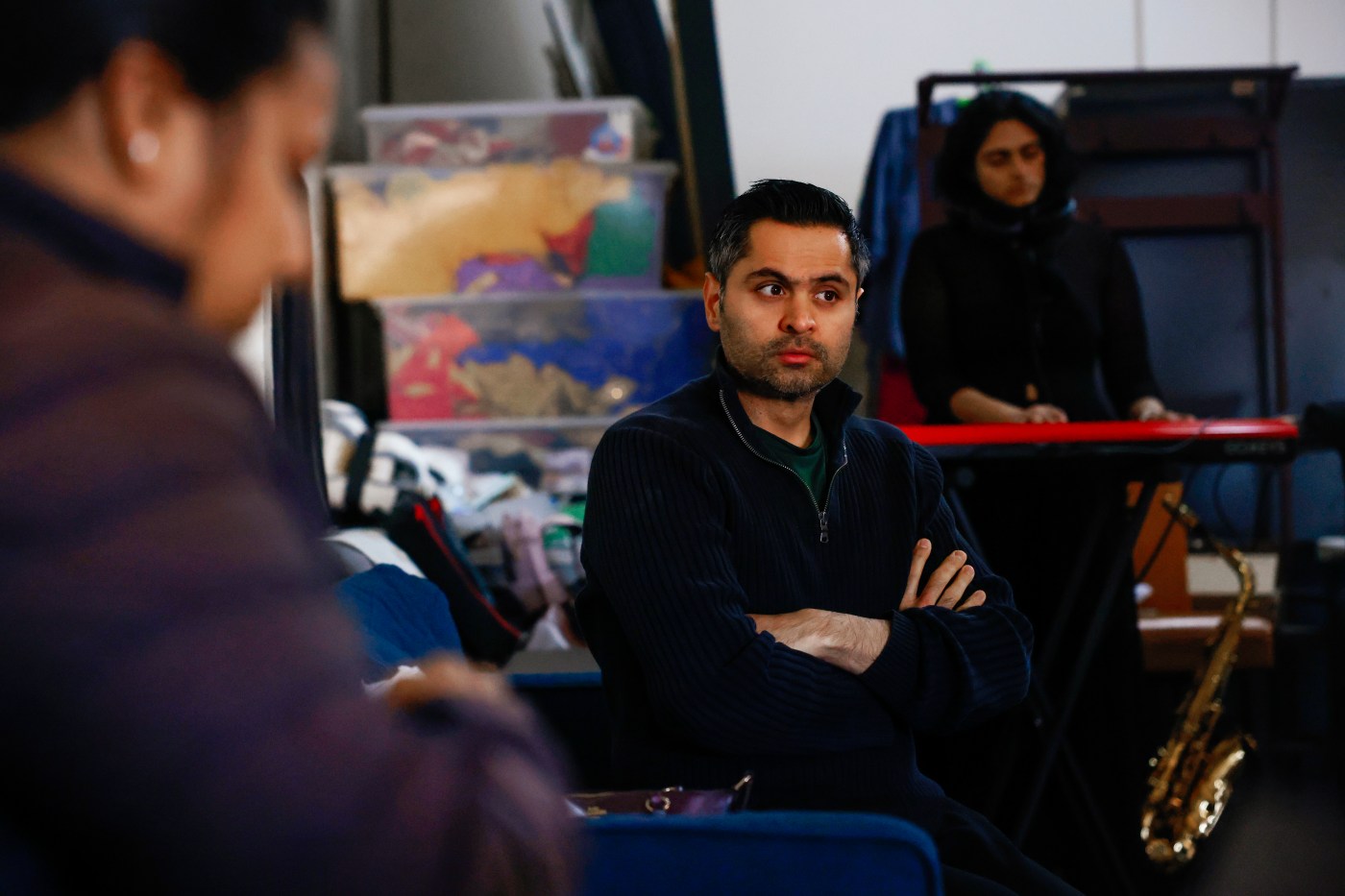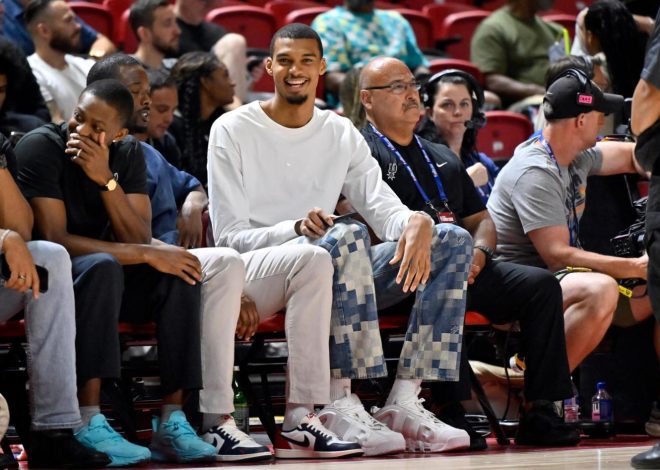
In the Bay Area Desi community, it’s all about culture, tradition and bonding
The lights dim, and a hush falls over the crowd, as the last nawab of Oudh strides onto the stage at Palo Alto’s Cubberley Theater. Or Mother Teresa takes the spotlight. Or 18th-century police chief Ghasiram Kotwal, the star of the Naatak production that will open later this month.
And the rapt crowd? They’re theater-loving Silicon Valley engineers, teachers, parents, friends and colleagues drawn to the fantastical dramas that play out on the Naatak House stage with a cast of hundreds and audiences in the thousands.
RELATED: 5 fantastic Desi restaurants and experiences to explore around the Bay Area
Naatak, which means drama or play in Hindi, has staged theatrical performances for the Bay Area’s South Asian community for nearly 30 years, with an ensemble and audience that have increased tenfold over the years. The biggest Indian theater company in the nation has found its community, and more fans are on their way.
Madhura Chopda, left, playing Nidhi Patidar grapples with Saurabh Ghotane, right, playing Captain Mihir Damle, during a rehearsal for Naatak’s “Dial M for Murder” in Santa Clara on Saturday, Nov. 9, 2024. (Shae Hammond/Bay Area News Group)
More than a million people of South Asian heritage live in California, a vast diaspora that includes individuals from Bangladesh, Bhutan, India, the Maldives, Nepal, Pakistan and Sri Lanka, many of whom began arriving in the 20th century. A quarter of that Desi population lives in Santa Clara County, with another quarter divided between Alameda and Contra Costa, their daily lives a testament to the diversity and breadth of the South Asian community. You’ll find engineers, doctors and academics among them and people in every other line of work, too – including the theater.
As the South Asian community has put down roots over the decades, so have the organizations devoted to creating third places – a coinage by sociologist Ray Oldenburg for the places where people can gather, socialize and bond outside work and school.
That’s how Naatak began in 1995, when UC Berkeley and Stanford theater lovers launched their nonprofit.
Roshni Datta and dancers from Naatak perform during a dress rehearsal in the Indian production ‘Gandhi’ directed by Sujit Saraf at Palo Alto’s Cubberley Theater in 2019. Naatak is the nation’s largest and most prominent Indian theater company, staging plays in Indian languages with a cast of techies by day– who work at Apple, Google, Facebook, Oracle — and thespians by night. (Ray Chavez/Bay Area News Group)
That was the impetus, too, for the Milpitas-based India Community Center or ICC, which began when a small group of South Bay seniors began looking for a home away from home, a space to chat, to play cards, read and discuss current events. What started in 2003 with a handful of people renting a room in a local church is now a sprawling facility headquartered in Milpitas, with locations across Santa Clara County’s West Valley, the Peninsula and the Tri-Valley.
Bollywood by Amit and Hiren performs during the India Community Center’s annual banquet in 2023. (Thien-An Truong for Bay Area News Group)
Though it started as a DIY senior center – and still offers some of those services today – the India Community Center has become a multigenerational community hub and the largest Indian American community center in North America, with a constituency that ranges, says CEO Manoj Goel, “from 18 months to 100 years old.”
Some 1,400 kids participate in its summer camp programs each year, and afterschool options include classes on Bollywood dance, robotics and even Spanish. The center is now a third place, where a new generation of the diaspora has grown up and found its people.
Kusum Kharkia participates with others in a yoga class at India Community Center in Milpitas. (Photo by Jim Gensheimer)
And like Naatak, the ICC is a gem in the region’s Desi community crown. It’s a place where dignitaries and celebrities from India typically stop when visiting the Bay Area, Goel says.
Naatak’s origin story lies with a group of college students, led by co-founder and artistic director Sujit Saraf, who were looking to bring a culture of theatergoing to the Bay Area’s budding Indian population. To create a space, in other words, for people who had caught the “kida,” or bug, for theater, says Harish Agastya, the nonprofit’s operations director.
When its founding members put on their first production in 1996 – with 15 people on stage and behind the scenes and 200 in the audience – Naatak was the only theater company of its kind on the scene. Almost three decades later, Naatak is not only the biggest theater company of its kind in the U.S., it has inspired the formation of similar theater ensembles, including the Bay Area Drama Company.
Naatak’s shows have grown as well in intricacy, ambition and size. Staged with a cast and crew of 150, each show draws thousands of attendees. Some plays are Desi takes on classics, like the recent production of Alfred Hitchcock’s “Dial M for Murder.” Others are comedies, such as “The Very First Maruti.” Written by Saraf, it tells the story behind the first Maruti, a popular car in India.
Related Articles
7 terrific Bay Area things to do this weekend, Jan. 17-19
Bay Area arts: 11 great concerts and shows to see this weekend
‘Noises Off’ marks role reversal for South Bay director
‘Six’ musical returns to the Bay Area for San Jose, San Francisco stands
SF Sketchfest 2025: Here are 8 comedy shows you shouldn’t think twice about attending
As they head into their 112th production – a music and dance-filled tale of deceit, trickery and violence in 18th-century India – longtime members of Naatak say they’re responding to a basic need from the community and having fun along the way. And their marketing budget?
“We don’t spend any money on marketing, yet these people find us,” Agastya says. “We even have visiting parents or uncles or cousins from India come to watch Naatak plays who are thrilled to see such a thing exists in the Bay Area, sometimes doing things at a scale not even possible in India.”
Desi people have always had an interest in the arts and culture, Agastya says. They just needed a place to nurture it. That they found community amid the spectacle is a bonus.
More…
Find details and ticket information for Naatak’s 2025 season and stream plays from prior seasons at www.naatak.org.
Learn more about the India Community Center and its programs at www.indiacc.org/.
Related Posts

Olivia Culpo and Christian McCaffrey welcome 1st baby before training camp

Dodgers’ Shohei Ohtani to hit leadoff for NL in All-Star Game, Athletics rookie Jacob Wilson batting ninth for AL
